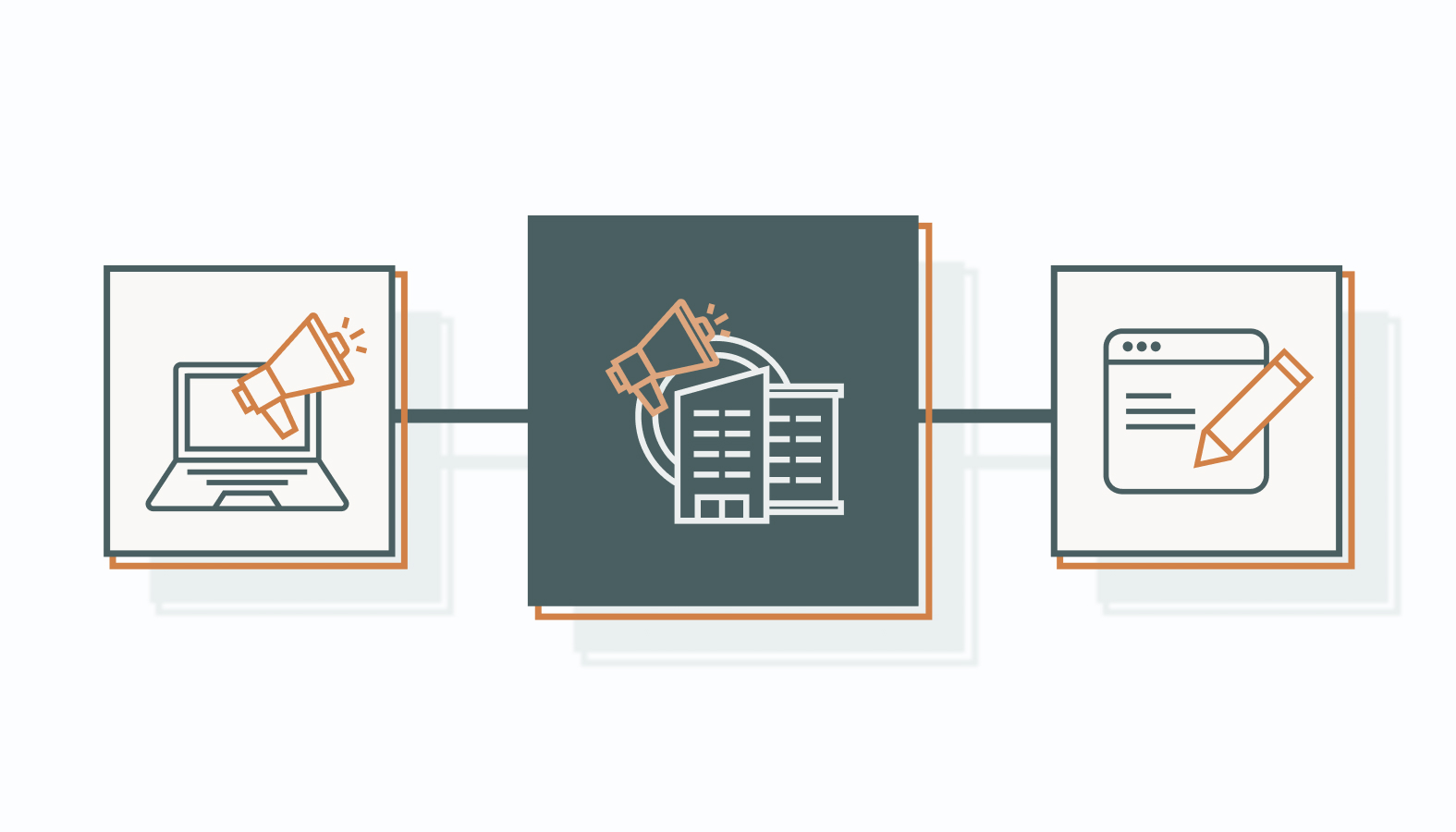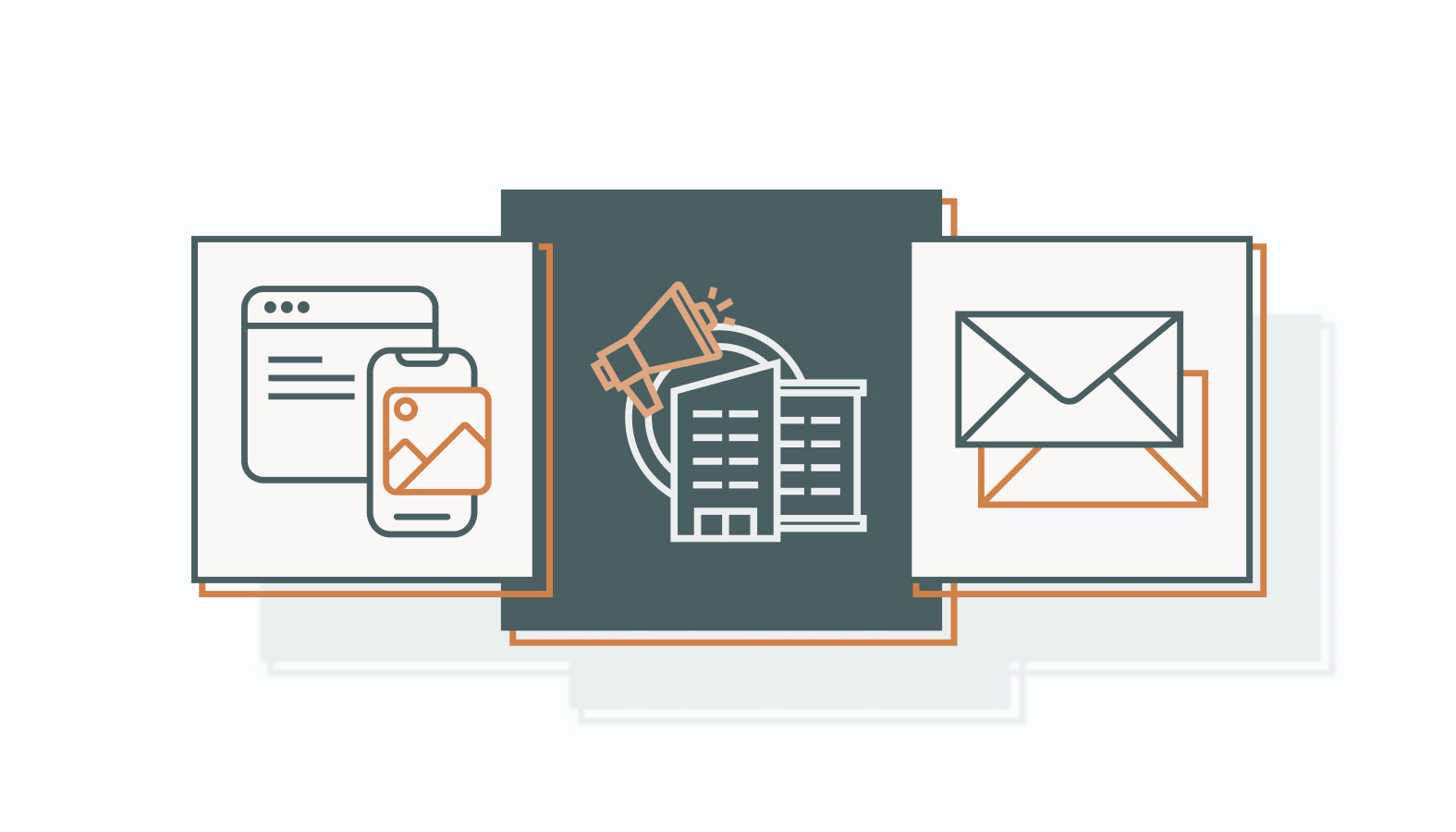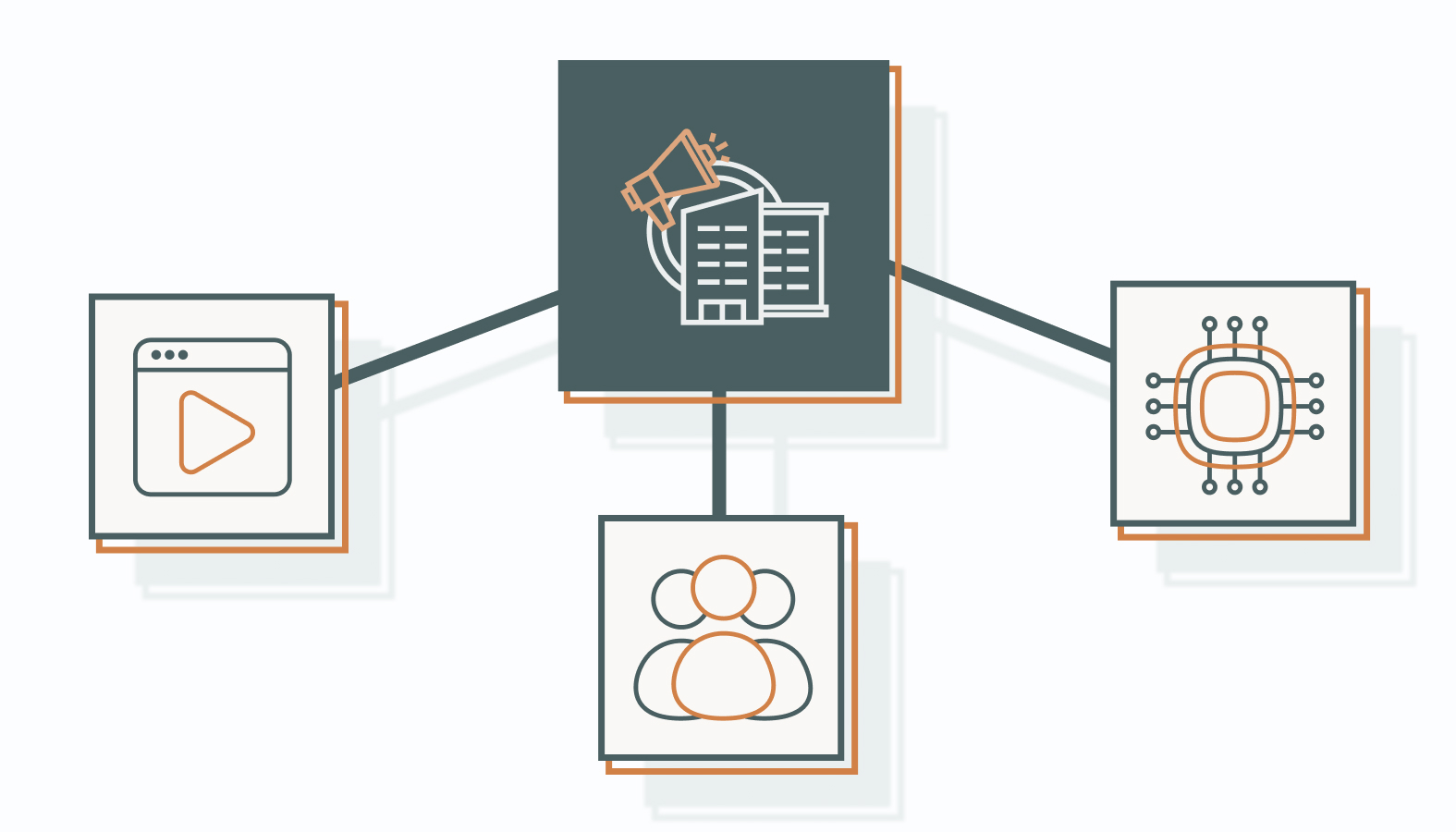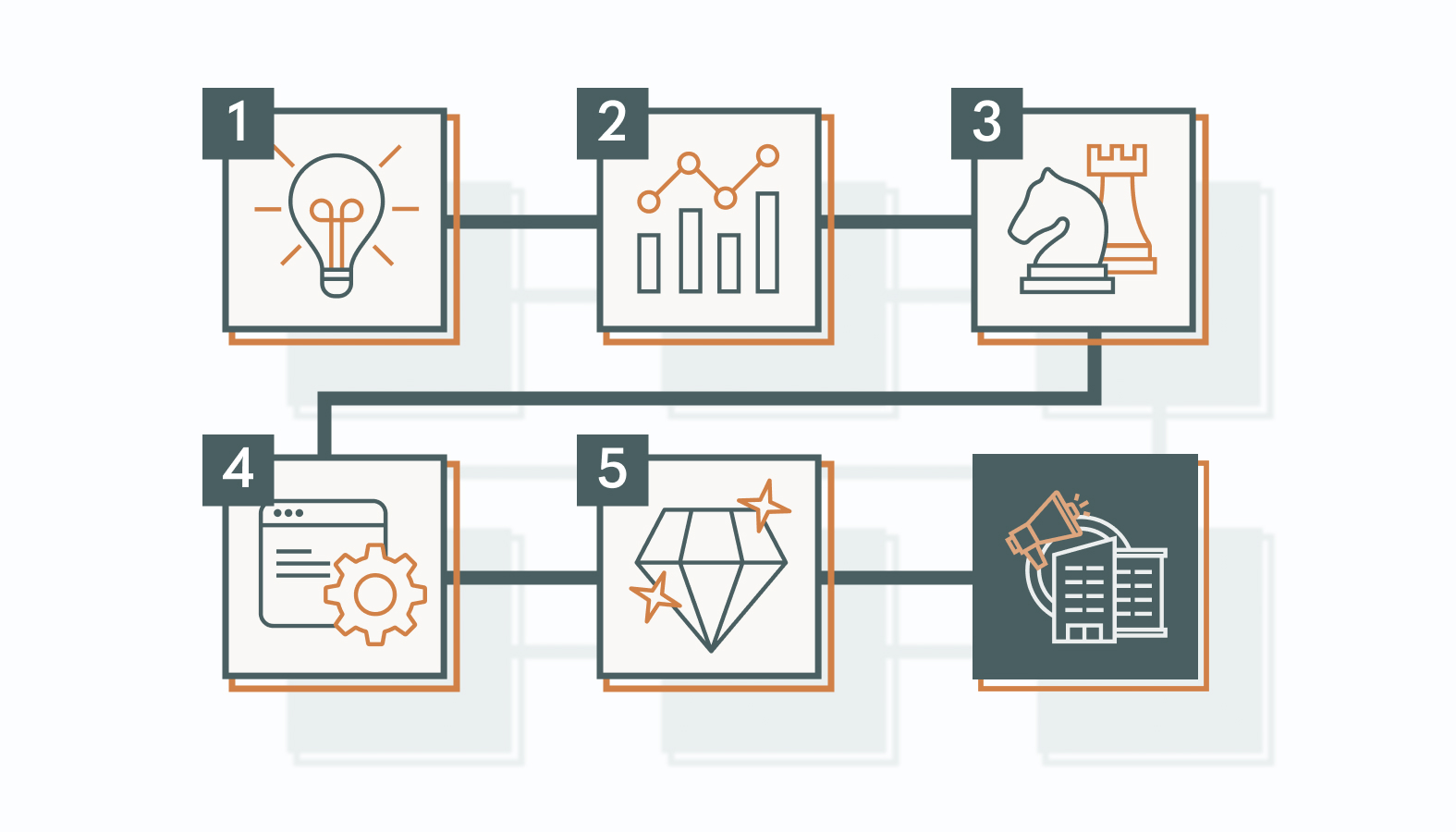Tired of chasing shadows in the bustling world of B2B digital marketing?
Unlike consumer marketing, where individual attention is the key, B2B is a different beast entirely. Here, it’s not just about selling a product but solving real problems for other businesses.
Imagine a digital world where your website is a place where busy professionals can quickly find the answers they need.
But how do you stand out in the crowded marketplace?
To succeed, you need to understand your audience deeply, create content that truly resonates, and harness the power of digital tools.
Continue reading our blueprint and learn how to make your B2B marketing a slam dunk.
Introduction to B2B Digital Marketing
A well-crafted digital strategy tackles the complex B2B landscape to reach the right decision-makers and close meaningful deals.
Understanding B2B Buyer Behavior
Unlike the impulsive nature of consumer purchases, B2B decisions involve a multi-step process that nurtures relationships, educates your audience, and demonstrates your value.
The B2B Buying Cycle:
- Awareness: Recognizing a problem or opportunity.
- Research: Exploring potential solutions.
- Consideration: Evaluating different vendors and offers.
- Decision: Selecting the best fit.
- Post-Purchase: Implementation and evaluation.
But here’s the twist: the B2B decision-making process can be lengthy and complex, with multiple stakeholders involved and higher financial stakes.
So, how do you navigate this maze?
To effectively engage B2B buyers, tailor your messaging to their specific needs at each stage and provide valuable content that guides them toward informed decisions.
Consider HubSpot and IBM. Their success stories demonstrate the power of understanding B2B buyer behavior.
HubSpot’s inbound marketing approach focuses on attracting and converting leads, while IBM’s account-based marketing (ABM) strategy targets high-value accounts. Both approaches highlight the importance of building relationships and delivering value to achieve B2B success.
Refining Your B2B Digital Marketing Framework
Build a rock-solid online presence, establish yourself as a thought leader with compelling content, and ensure all your digital efforts are aligned for maximum impact.
Establishing a Robust Digital Presence
Your B2B success starts with a strong online presence.
Create and maintain online touchpoints (website, social media, email campaigns, and more) that resonate with your audience and showcase your brand’s value.
Crafting a User-Centric B2B Website
Your website is the digital face of your B2B brand. Make it a must-visit destination with these key ingredients:
- Usability: Keep it simple, fast, and easy on the eyes, even on mobile devices.
- Design: Create a professional look that reflects your brand’s personality and with visuals that wow.
- Content: Deliver value with relevant, engaging content that speaks directly to your audience.
SEO Optimization for B2B Audiences
Search Engine Optimization (SEO) drives organic traffic to your website. Follow these SEO best practices:
- Use relevant keywords: Naturally incorporate them into your content, meta descriptions, and headers.
- Build quality backlinks: Connect with industry influencers and guest blogs to boost your site’s authority.
- Ensure technical excellence: Ensure your site is fast, mobile-friendly, and error-free.
Content Marketing for Thought Leadership
Content marketing—where you plan, create, and share valuable content—establishes your brand as a thought leader, builds trust, and attracts more leads.
Creating Valuable B2B-Oriented Content
To truly resonate with B2B audiences, try these formats:
- Whitepapers: Offer in-depth insights and solutions.
- Case Studies: Showcase your product’s success stories.
- Webinars: Provide educational value and engage your audience directly.
Regardless of format, the key is to understand your audience’s needs and pain points. Create content that solves their problems and guides them through the buying journey.
Utilizing Content to Nurture Leads
Here’s how to use content at every stage:
- Top of the Funnel (Awareness): Capture attention with engaging blog posts and social media content.
- Middle of the Funnel (Consideration): Provide in-depth resources like whitepapers and case studies to help them evaluate their options.
- Bottom of the Funnel (Decision): Offer demos, trials, and consultations to seal the deal.
Strategically using content at each stage nurtures leads and turns them into loyal customers.
Nurturing B2B Relationships in the Digital Age
Build connections with other businesses by using digital tools that your customers love.
Strengthening B2B Relationships Through Digital Channels
Leverage online platforms for social selling and community building to develop meaningful B2B relationships.
Identifying the Right Platforms for B2B Engagement
Pick platforms that align with your industry, target audience, and desired interactions.
Consider factors like your audience’s presence on the platform, its suitability for professional engagement features (like LinkedIn’s InMail or Slack’s channels), its support for your desired content type (articles, videos, or live events), and its analytics capabilities.
Conduct audience surveys, analyze competitor activities, and test multiple platforms to make an informed decision.
Social Selling and Community Building
Use social platforms and online communities to strengthen B2B relationships.
Social selling builds relationships through valuable content and active engagement. Community building fosters a supportive network. Together, they expand your reach and establish you as an expert.
Email Marketing in B2B Communications
Email marketing remains a powerful tool for B2B communication; It’s a direct way to reach your audience.
Crafting Effective B2B Email Campaigns
Effective B2B email campaigns focus on relevance, personalization, and engagement.
- Segment: Tailor messaging based on audience.
- Personalize: Use personalized greetings, content, and offers.
- Provide value: Offer educational content, industry insights, and exclusive offers.
- Include a Call-to-Action (CTA): Guide recipients toward desired actions.
Measuring Email Marketing Success
Want to know if your email campaigns are performing well?
Measure campaign success with key metrics: open rate, click-through rate, conversion rate, bounce rate, and unsubscribe rate. These metrics help you:
- Identify what’s working: Pinpoint your most successful campaigns and strategies.
- Uncover what’s not: Identify areas where you can improve.
- Refine your approach: Make data-driven decisions to optimize your email marketing efforts.
Pay-Per-Click (PPC) and Paid Advertising for B2B
PPC advertising lets B2B marketers show ads on search engines like Google and Bing and across various social media platforms such as LinkedIn, Facebook, and Twitter.
Leveraging PPC Campaigns in B2B Marketing
Want to get your B2B message in front of the right eyes, fast? Pay-per-click (PPC) advertising is your ticket.
- Laser-Sharp Targeting: Reach specific decision-makers based on their job, industry, and more.
- Pay-Per-Click Efficiency: Only pay when someone clicks on your ad, making it cost-effective.
- Real-Time Results: See your ads live and measure their performance with advanced analytics.
- Speed to Market: Instantly get your message out there, perfect for time-sensitive campaigns.
Budgeting, Targeting Options, and Ad Formats Suitable for B2B
With PPC, you can control key factors like budgeting, ad formats, and targeting options.
- Budgeting: Set daily or monthly budgets, and choose bidding strategies (CPC, CPM, or CPA) that align with your goals.
- Ad Formats: Select the perfect ad format for your campaign: text-based search ads, visual display ads, targeted social media ads, or remarketing ads.
- Targeting Options: Reach your ideal audience with precision targeting based on keywords, demographics, custom audiences, and lookalike audiences.
Examples of Successful B2B PPC Campaigns
Well-planned PPC campaigns can drive B2B growth. For example:
- Salesforce targeted senior decision-makers on LinkedIn, increased leads by 21%, and reduced cost-per-lead by 15%.
- IBM targeted mid-sized enterprises using Google Search ads, leading to increased trial sign-ups by 35% and boosted sales.
- HubSpot targeted marketing professionals and small business owners on Facebook, which increased demo requests and product adoption by 28%.
Innovative B2B Digital Marketing Tactics
Boost your B2B success with cutting-edge tactics. Utilize video, influencers, and automation to achieve specific goals.
Exploring Video Marketing for B2B
Video is no longer just for entertainment; it’s a powerful tool for B2B marketing. From explaining complex concepts to showcasing products in action, videos can capture attention, build trust, and drive results.
Use videos on your website to boost engagement, on social media to reach a wider audience, in your email marketing to improve open rates, and in webinars to enhance viewer experience and generate leads.
To create effective B2B videos that convert:
- Define Your Goal: What do you want your viewers to do after watching?
- Focus on Quality: Invest in good audio, visuals, and a well-crafted script.
- Keep it Concise: Aim for 2-3 minutes to maintain viewer attention.
- Include a Clear Call to Action: Tell viewers exactly what you want them to do next.
- Experiment with Different Formats: Try explainer videos, product demos, testimonials, and live streams.
The Role of Influencer Marketing in B2B
Think influencer marketing is just for consumer brands? Think again.
Collaborating with industry influencers can be a game-changer for B2B businesses. Here’s how you can leverage this:
- Find the Right Fit: Identify influencers who are respected in your industry and resonate with your target audience.
- Build Authentic Relationships: Connect on a personal level and offer exclusive perks or insights.
- Create Collaborative Content: Collaborate on content that benefits both you and the influencer, like guest blog posts, webinars, or social media takeovers.
- Measure Your Success: Track engagement metrics, website traffic, lead generation, and brand sentiment to assess the impact of your influencer campaigns.
An excellent example of influencer marketing in the B2B world is Adobe’s collaborations with creatives to showcase their software and IBM’s partnerships with tech analysts.
The Impact of Automation and AI on B2B Marketing
Automation and AI aren’t just buzzwords but game-changers in B2B marketing.
Tools like HubSpot, Marketo, Salesforce Pardot, and Drift are making it easier than ever to:
- Automate Lead Scoring: Prioritize leads based on their level of engagement and potential value.
- Segment Your Audience: Tailor your messaging to specific groups of buyers.
- Leverage Predictive Analytics: Use data to forecast future trends and make smarter decisions.
- Personalize Customer Interactions: Deliver highly relevant content and experiences.
With automation and AI on your side, you can create more meaningful and impactful connections with your B2B customers.
Integrating Offline and Online B2B Marketing
In today’s interconnected world, a siloed marketing approach is a thing of the past.
B2B businesses must bridge the gap between offline and online strategies to create a unified brand message. Here’s how to effectively integrate these two powerful channels.
- Ensure Consistent Branding: Maintain a cohesive brand identity across all touchpoints.
- Cross-Promote: Drive traffic between your offline and online channels.
- Leverage Events: Use events to capture leads and generate buzz.
- Integrate Direct Mail: Combine direct mail with digital campaigns for a more impactful reach.
- Utilize Account-Based Marketing: Target high-value accounts with personalized outreach and coordinated campaigns.
- Synchronize Data and Analytics: Track and analyze interactions across all channels to optimize your strategy.
Measuring and Analyzing B2B Digital Marketing Success
Key Performance Indicators (KPIs) let you track, analyze, and report on them.
KPIs and Metrics Specific to B2B Digital Marketing
Use any or all of these key performance indicators (KPIs) to measure the success of your B2B digital marketing campaigns:
Lead Generation
Measure lead generation success by tracking the total number of leads generated, the lead quality (percentage of leads meeting your quality criteria), and the average cost per lead (CPL).
Conversion Rates
Measure conversion rates by comparing the percentage of visitors taking desired actions on your landing pages to the percentage of email recipients taking desired actions.
Engagement Metrics
To measure engagement, track website traffic (segmented by channels), bounce rate (percentage of visitors leaving after one page), and time on site (average time visitors spend on your website).
Sales Performance
Monitor sales performance by tracking sales qualified leads (SQLs or leads ready for sales engagement), opportunity conversion rate (percentage of SQLs that have been transformed into sales opportunities), and revenue generated (sales resulting from digital marketing efforts).
Customer Retention and Loyalty
Measure customer retention and loyalty with customer lifetime value (CLV or the projected revenue from a customer) and customer retention rate (percentage of customers continuing business with you).
Methods for Tracking, Analyzing, and Reporting on Digital Marketing Efforts
To effectively measure and analyze your B2B digital marketing success, use these methods:
- Utilize analytics platforms: Tools like Google Analytics, HubSpot, and Salesforce provide insights into website traffic, user behavior, and conversion rates.
- Implement tracking codes and pixels: Use UTM parameters and Facebook Pixel to track user interactions.
- Set up dashboards: Create custom dashboards with tools like Google Data Studio or Tableau for real-time insights.
- Conduct regular performance reviews: Assess campaign effectiveness, goal achievement, and optimization opportunities.
- Generate comprehensive reports: Create reports with an executive summary, detailed metrics, performance insights, and actionable recommendations.
These KPIs allow you to refine your strategies, improve performance, and deliver maximum ROI.
Developing a Holistic B2B Digital Marketing Strategy
Building a winning B2B digital marketing strategy takes careful planning and execution. This section walks you through the process, from the basics to measurement and optimization.
Phase 1: Foundation Setting
Before diving into tactics, build a solid foundation for your B2B digital marketing strategy.
- Define Your Brand: What are your core values and messaging?
- Set SMART Goals: Establish clear, SMART (specific, measurable, achievable, relevant, and time-bound) objectives that align with your business goals.
- Know Your Audience: Develop detailed buyer personas and identify key decision-makers within your target companies.
Phase 2: Analysis and Assessment
Analyzing your marketing situation helps you see what you’re doing well, what you’re not doing well, what you can improve, and what might cause problems.
SWOT Analysis Specific to B2B Markets:
- Strengths: Identify what your business does well, such as a strong brand reputation or a robust product offering.
- Weaknesses: Recognize areas for improvement, such as limited online presence or outdated technology.
- Opportunities: Look for external opportunities, such as emerging market trends or new digital channels.
- Threats: Be aware of potential threats, including competitors and market disruptions.
Auditing Owned Media
Assess the effectiveness of your owned media in positioning your brand as a thought leader.
Evaluate the lead generation performance of your website, blog, and social media, and identify opportunities for improvement.
Evaluating Earned Media in a B2B Context:
Assess press coverage, customer reviews, social media mentions, and backlinks to understand how your brand is perceived and how well your SEO is performing.
Phase 3: Strategic Development
Developing a strategic plan involves carefully planning your paid media efforts, allocating budgets, and selecting the right digital channels and tactics.
- Planning Paid Media Efforts: Develop B2B ad strategies targeting decision-makers on platforms like LinkedIn and use industry-specific keywords on Google Ads. Content syndication should also be considered to reach a wider audience and generate high-quality leads.
- Budget Allocation: Allocate your budget based on the expected ROI and cost-per-lead. Prioritize channels and tactics that deliver the highest ROI.
- Selecting Digital Channels and Tactics: Choose digital channels that align with the B2B buyer journey. Use a mix of channels, like SEO, PPC, social media, email marketing, and content marketing, to create a comprehensive approach.
Phase 4: Implementation and Experience Optimization
To implement and optimize your B2B digital marketing strategy, develop detailed timelines and allocate necessary resources, including team members and budget.
Launch your campaigns according to the plan, ensuring all elements are in place and functioning as intended.
Here are things to consider when optimizing B2B digital experiences:
- User Interface (UI): Design a user-friendly interface that enhances the user experience. This includes intuitive navigation, fast-loading pages, and mobile-friendliness.
- Usability: Continuously test and improve the usability of your digital platforms to ensure they meet the needs of your target audience.
- Accessibility: Adhere to accessibility standards like WCAG to make your website and digital platforms accessible to users with disabilities.
- Personalization: Implement personalization features to deliver tailored experiences based on user preferences and behavior.
- A/B Testing: Conduct A/B tests to experiment with different design elements and messaging to identify the most effective variations.
By optimizing these aspects, you can create a more engaging online presence, drive conversions, and build stronger B2B relationships.
Phase 5: Measurement and Refinement
The final phase involves measuring the success of your digital marketing efforts. Here’s how:
- Use analytics tools: Track KPIs and metrics with platforms like Google Analytics, HubSpot, and Salesforce.
- Set up custom dashboards: Monitor real-time performance and gain insights.
- Analyze data: Identify trends, strengths, and areas for improvement.
- Continuously improve: Adjust your strategy based on data-driven insights.
This approach allows you to refine your strategy using data-driven insights.
Navigating the Evolving B2B Landscape
You’ve reached the end of our guide, but the journey continues. The digital world is constantly changing, so your strategy must also adapt.
To stay ahead:
- Monitor progress: Regularly review your goals and performance.
- Stay updated: Keep up with the latest digital marketing trends.
- Experiment: Try new things to see what works best for your business.
You can also let the digital marketing experts handle the heavy lifting. With the right strategy, your B2B business can grow and make a significant impact.
Ready to Achieve B2B Growth with a Winning Strategy?
If your marketing team is feeling the strain or needs expert guidance, we’re here to help.
Let’s partner to craft a customized B2B digital marketing strategy that drives results.
Schedule a no-obligation chat with one of our experts. We’ll discuss your specific challenges and goals, offering honest insights and tailored advice.
Together, let’s unlock your B2B growth potential.










